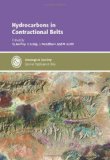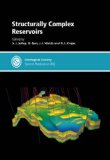Petroleum geology
- A Review Of Fault Sealing Behaviour And Its Evaluation In Siliciclastic Rocks

- AmericanOilman.com - The website for the oil & gas professional
- Basin Screening for Seal-rock Quality, New Zealand Region

- Black Shale Net - A geoscience platform to exchange information about (non-coal) organic-rich strata: black shales - hydrocarbon source rocks - oil shales - hot shales
- Calibrating Seal Risk against Global Analogues and Observations: Where Does the Middle East Fit?

- Center for Petroleum and Geosystems Engineering
- Centre of Excellence in Petroleum Geology (CEPG)
- Derivation of Scaled Hydrocarbon Head Potential, A New Workflow for Petroleum System Analysis: Application to the Eagle Ford Formation, SE Texas

- Drilling Ahead-'The Oil & Gas Space" - An international social networking site exclusively for Oil & Gas professionals
- Drilling for oil - virtual laboratory
- Early days of the history of the oil industry
- ELLA GRA Process - Concepts and Methods for the Prediction of Reservoir Hydrocarbon Type Using Ratios of Gas Chromatography C1-C5 Gases

- EPGeology.com - free online community that aims to bring petroleum professionals and geologists together and share knowledge.
- Evolution of E & P Risk Analysis (1960-2017)

- Exploration & Production Geology Forums
- Exploration Risk Assessment Using Forward Stratigraphic Modelling: Flemish Pass Basin, NL, Canada

- Exploring for Offshore Oil and Gas
- Exploring the Potential for Biogenic Methane Formation Using Hydrogeochemical Thermodynamics

- Fault Seal Analysis: Constraining Fault Seal Risk Using Seismic Velocities

- Fault Seal Analysis through Geologic Time Using an Integrated Petroleum Systems Approach

- Fracture Systems Prediction for Exploratory Prospects, Using Multiscale Data Integration. Application in a Mesozoic Carbonated Reservoir in the Southeastern of Mexico

- Glaciogenic Reservoirs and Hydrocarbon Systems

- Global Accumulations of Oil and Gas in Fractured and Weathered Basement: Best Practices for Exploration and Production

- Global Distribution of Petroleum Reserves in Deep Reservoirs

- How much do you know about the methods for determining onset of asphaltene precipitation?

- Hydrocarbon Exploration Survey Strategies for Frontier Basins and Other Under-Explored Areas

- Importance of selected geological variables in characterization of mature hydrocarbon fields

- Integrated Geomechanical Approach in Characterizing Sealing Capability of Faults in Cretaceous Carbonate Reservoirs, Abu Dhabi

- Integrated Petroleum System Modeling to Evaluate Frontier Basins and Resource Plays

- Is Our Carbonate Reservoir Fractured or Not?

- Migration Lag - What is it and how it affects Charge Risk and Fluid Properties

- Most Important Factors in Charge Risking and Best Practices

- Nature and Origin of Dry Natural Gas in the Middle Indus Basin, Pakistan

- NefteGaz.RU
- Ocean Drilling Dictionary
- Oil Analysis
- Oil Analysis and Lubrication Dictionary
- Oil and Gas Data, Information, and Analysis
- Oil and Gas Online - Virtual community for the oil and gas exploration and production industry
- Oil Basics
- Oil from Granitoid Rocks - Reservoir Characterization of Fractured Basement in Neuquén Basin, Octógono Field, Argentina

- Oil Network
- Oil Online
- Oil Terms
- Oilfield Directory - The Global Petroleum Resource thousands of top executives rely on for their information
- OilField InfoWeb Ltd.
- Organization of Petroleum Exporting Countries (OPEC)
- Origin of the Mid-Cretaceous Heavy Oils from the Safaniya Sandstone Reservoir, (Wasia Formation), Saudi Arabia

- Outcrops as Analog of Fractured Reservoirs: Capture Explicit Geometries, Derive Statistics and Model Behaviour

- PayZone Drilling Simulator
- Petroleum
- Petroleum Engineers Technical Help Forum
- Petroleum Open Projects Consortium (POPC) - Place to discover where oil & gas petroleum and geological engineers find exploration, drilling and production resources
- Petroleum Recovery Research Centre (New Mexico)
- Petroleum System

- Petroleum World
- PetroleumGeology.org
- PGCE 2013 - Petroleum Geoscience Conference - Kuala Lumpur, Malaysia, March 18-19, 2013
- Possible Origins for Low Thermal Maturity, High-Nitrogen Natural Gases

- Reevaluation of the Heavy Oil and Bitumen Resources of the Western Kentucky Tar Sands: What Did We Learn about the Tar Sands That Is New?

- Reservoirs in Fractured Basement
- Role of Geochemistry in Coalbed Methane-A Review

- Sandstone reservoir quality prediction: The state of the art

- Schlumberger Oilfield Glossary
- SciCentral.com - Petroleum Engineering
- Sealing - What Are We Risking?

- Source and Fate of Oils in the Lawton Oilfield, Southwestern Oklahoma

- Strategies for petroleum exploration based on Bayesian Networks: A case study

- Structural style and hydrocarbon prospectivity in fold and thrust belts: a global review

- Subsea Oil & Gas Directory - online resource for the subsea oil and gas industry
- Tectonic Evolution Control on Hydrocarbon Accumulation in Fractured Basement: A Case Study from Melut Basin in South Sudan and Bongor Basin in Chad

- Use of paleo-thermo-barometers and coupled thermal, fluid flow and pore fluid pressure modelling for hydrocarbon and reservoir prediction in fold-and-thrust belts

- Using Biodegradation to Date Hydrocarbon Entry Into Reservoirs: Examples From the Cooper/Eromanga Basin, Australia

- Using Structural Restoration Techniques and Strain Tracking to Predict Fracture Distributions

- Well Logging Information
- What is Crude Oil
- Whipstock - Energy Portal
- Workflows for Fault Seal Prediction in Siliciclastics and Carbonates

Books about Petroleum geology










